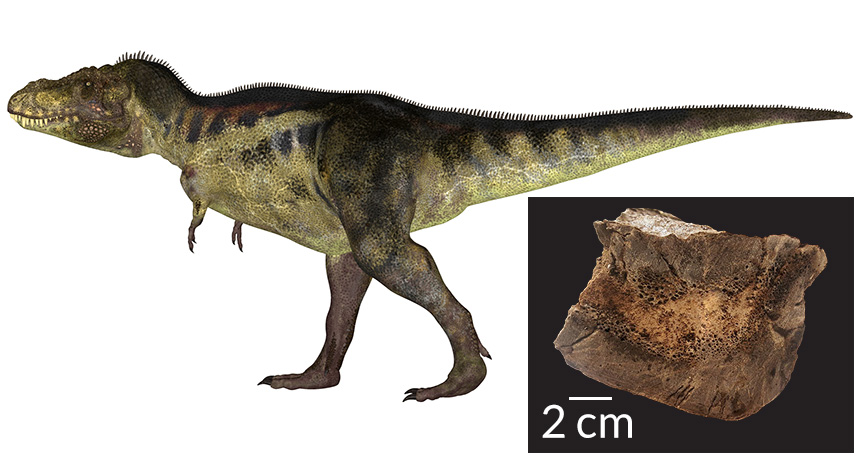How to tell if a T. rex is expecting

Call it a T. rex pregnancy test.
Chemical analyses of fingernail-sized slivers of bone can reveal whether a Tyrannosaurus rex was expecting, paleontologist Mary Schweitzer of North Carolina State University in Raleigh and colleagues report March 15 in Scientific Reports.
The analyses confirm that T. rex had medullary bone, a type of reproductive tissue found in female birds, but only when they’re producing eggs, or “in lay.” Scientists had hypothesized that dinosaurs might have this tissue, too, and in 2005 Schweitzer’s team spotted what looked like medullary bone in a 70-million-year-old T. rex fossil found in Montana (the dino was about 18 years old when it died).
A colleague had sent Schweitzer a box filled with the dinosaur’s bones, she says. “I pulled the first fragment out and said, ‘Oh my gosh! It’s a girl and it’s pregnant.’” But she didn’t know for sure.
Medullary bone has a distinct appearance: It fills the inner cavities of bones and is loosely woven and pocked with holes — kind of like a sponge. Other bone tissue, such as healing fractures, can mimic the look. Now, Schweitzer’s team has tested the T. rex tissue for keratan sulfate, a chemical found in medullary bone, but not other bone types. As suspected, the team saw evidence of the chemical.
Detecting medullary bone means that scientists can identify dinosaurs that were in lay. But the analyses do require destroying a bit of fossil. And there’s still no way to tell males from “nonpregnant” females. Eventually, though, that’s the idea, Schweitzer says. Now that she knows her T. rex was a girl, she wants to examine it for other features that could be linked to sex.


